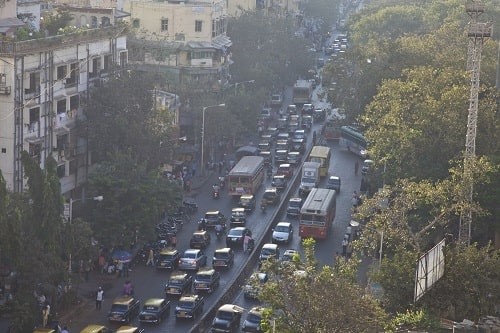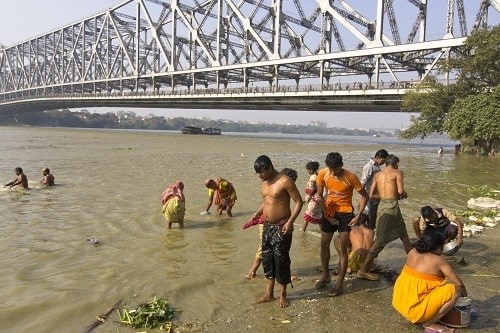India has been ranked in the bottom five countries globally for its performance on environmental health and ecosystem vitality.
Features
Room for improvement: India and the environment
The findings show that the country’s government and businesses need to make greater efforts on sustainability issues, such as improving air quality, protecting biodiversity and reducing greenhouse gas emissions.
India is ranked among the bottom five countries on the Environmental Performance Index (EPI) 2018, according to a biennial report by Yale and Columbia Universities along with the World Economic Forum. The 2018 EPI ranks 180 countries on 24 performance indicators across 10 issue categories covering various aspects of environmental health and ecosystem vitality.
The 10 EPI ranking categories are:
1. Air quality
2. Water and sanitation
- Heavy metals
- Biodiversity and habitat
- Forests
- Fisheries
- Climate and energy
- Air pollution
- Water resources
- Agriculture.
The EPI scores each country on its overall environmental performance using the most recent year of data available as well as data from approximately a decade earlier. The aim is to provide a gauge of how close each country is to achieving established environmental policy goals and to indicate which countries are performing best against the array of environmental pressures they face.
 India was ranked 178 out of 180 countries for its performance in improving indoor and outdoor air quality
India was ranked 178 out of 180 countries for its performance in improving indoor and outdoor air quality
In short, the EPI provides a scorecard that highlights global leaders and laggards in environmental performance, gives insight on best practices and draws attention to the sustainability issues on which countries must take further action.
To meet the ambitious targets outlined in the United Nations 2015 Sustainable Development Goals (SDGs) and the Paris Climate Agreement, governments are increasingly being asked to explain their performance on a range of pollution control and natural resource management challenges through reference to qualitative metrics. A more data-driven approach to environmental protection is designed to make it easier to spot problems, track trends, highlight policy successes and failures and maximise the gains from government investment in environmental protection.
However, the EPI report reveals that India’s challenges across most of the 10 EPI indicators are as serious as ever.
The EPI scores countries from 0 to 100 for environmental performance, with 0 indicating the worst performance and 100 the best.
Taking into account overall performance across all of the 10 environmental issues listed, India scores just 30.57, ranking the country at 177 out of the 180 countries analysed. Only the Democratic Republic of the Congo (30.41), Bangladesh (29.56) and Burundi (27.43) are ranked lower.
The low score for India illustrates the need for more sustainability efforts, both by India’s central and state governments and by Indian businesses. These efforts need to address several fronts, especially improving air quality, improving water quality (drinking water and sanitation), protecting biodiversity and reducing emissions.
The table above shows that India is ranked in the bottom third of countries across seven of the 10 issue categories. Perhaps the most pressing environmental health and ecosystem issues requiring action in India relate to air quality and air pollution, water and sanitation, biodiversity and habitat loss.
However, it is worth noting that the UK is also ranked in the bottom third for two of the 10 issue categories – forests (such as loss of tree cover) and fisheries.
Air quality and air pollution
In total, more than three quarters of India’s population are exposed to air pollution that’s higher than the recommended level set by India’s government. The exposure level of those affected by poor air quality is also four times the maximum recommended by the World Health Organization (WHO).
No Indian state has reduced its air pollution levels either to or below the WHO’s limits. On average, people in India have their life expectancy cut short by 5.3 years thanks to air pollution. In two districts of Delhi, life expectancy is reduced by 12 years, which is the greatest reduction in life expectancy due to air pollution anywhere in the world.
In fact, the EPI report says that in India, deaths attributed to exposure to the air pollutant PM2.5 have risen over the past decade and are now estimated at 1.64 million annually. PM2.5 is atmospheric particulate matter, or fine particles, arising from sources such as power plants, motor vehicles, residential wood burning and agricultural burning.
These tiny particles can penetrate deep into the lungs and long-term exposure to them has been shown to increase the mortality risk from cardiovascular diseases. Exposure to high concentrations of PM – for example, during short-term pollution episodes – can also exacerbate existing lung and heart conditions among people and increase the number of deaths and hospital admissions associated with these conditions.
In India, where industrial emissions, emissions from motor vehicles and the burning of crop residue, wood and charcoal are widespread air pollution sources, significant political willpower will therefore be required for air pollution levels to fall.
Water and sanitation
The World Bank estimates that 21 per cent of communicable diseases in India are linked to unsafe water and the lack of hygiene practices. Further, more than 500 children under the age of five die each day from diarrhoea in India alone.
 India was ranked at just 145 out of 180 countries for the population’s access to adequate water and sanitation, such as access to toilet facilities that do not pose health risks and safe drinking water
India was ranked at just 145 out of 180 countries for the population’s access to adequate water and sanitation, such as access to toilet facilities that do not pose health risks and safe drinking water
The central government of India has demonstrated its commitment to the overall wellbeing of its citizens. Back in 2005, the central government established the National Health Mission and introduced structural reforms to strengthen health care and sanitation. The National Health Policy 2017 clearly articulates the government’s commitment to reforming the health sector and achieving universal health coverage – not least by proposing an increase in the health budget to 2.5 per cent of India’s GDP.
The policy also sets targets for disease elimination, reduction of premature and preventable mortality, systems strengthening and improving health services.
Heavy metals
The major anthropogenic sources of heavy metals in India are industrial wastes from mining sites, manufacturing and metal finishing plants, domestic waste water and run-off from roads.
Many of these trace metals are highly toxic to humans, such as mercury, lead, iron, copper, cadmium, nickel, arsenic and tin.
In a recent study by the Central Water Commission, it was found that 42 rivers in India have at least two of these toxic heavy metals in quantities beyond the permissible limit. The study, which tested samples of river water collected from 16 river basins during three seasons – summer, winter and monsoon – found huge amounts of lead in 69 rivers. Ganga, the national river, was found to be polluted with heavy metals – chromium, copper, nickel, lead. Six specific rivers – the Arkavathi, Orsang, Rapti, Sabarmati, Saryu and Vaitarna – had unacceptably high concentrations of four pollutants.
Climate and energy
Climate change has become an issue of grave concern in India, with rural and poor populations that are particularly vulnerable to the impacts of climate change.
India has additional reasons to be concerned about climate change because its large population depends on climate-sensitive sectors such as agriculture and forestry for its livelihood.
Climate change impacts present formidable short-term and long-term risks to India in terms of disruption of ecosystem services, loss of bio-diversity and breakdown of traditional livelihood systems across different geographies and regions.
At a macro level, climate change is likely to have significant adverse impacts on food, water and energy security across India, threatening to disrupt the current pace of social and economic growth enjoyed by the country.
Agriculture
In India, like elsewhere, the agriculture sector’s impact on the environment varies based on the farming practices employed.
Agriculture in India contributes to a plethora of environmental issues, including deforestation, loss of biodiversity and eutrophication. The latter is where excess nitrogen run-off from over-fertilisation causes algal blooms, loss of oxygen from the water, and the death of aquatic animals in river systems. Examples in India include mass fish kills in the Dhanas Lake in Chandigarh, Ulsoor Lake in Bangalore and the Yamuna River in Delhi. However, the issue of eutrophication of India’s lakes and rivers is extremely widespread.
Conclusion
In summary, the EPI 2018 report shows that India has some way to go on environmental sustainability within areas such as air pollution and water/sanitation, both of which are severely affecting the health of Indian citizens in their millions.
According to the Thomson Reuters Foundation, pollution caused nine million deaths in India in 2015 alone – three times more than AIDS (acquired immune deficiency syndrome), tuberculosis and malaria combined. As pollution levels continue to rise and pressures on natural resources increase day-by day, the Indian government must start to address these issues.
The index can be found at: epi.envirocenter.yale.edu
See also: epi.envirocenter.yale.edu/epi-country-report/IND
Keith Whitehead is senior environmental consultant at the British Safety Council
FEATURES

Why quality data is essential when using AI for occupational safety and health management
By Dr Bob Rajan-Sithamparanadarajah. Safety Groups UK (SGUK) on 01 April 2025
Artificial intelligence-powered models, systems and technology have the potential to significantly improve the management of occupational safety and health (OSH) risks, but it is vital that OSH practitioners understand the limitations and dangers of using AI to protect people at work.

Sustainable aviation fuels: how do we put the SAFety in SAF?
By Megan Hine, Draeger Safety UK on 01 April 2025
Sustainable aviation fuel is seen as having great potential to reduce the greenhouse gas emissions from air transportation. However, as with other emerging renewable energy sources, the safety risks arising from the production, processing and storage of these biofuels can be accompanied by new risks and will require careful management from the safety industry as utilisation increases to meet the Government’s mandatory targets.

Why social sustainability should be a priority for health, safety, environmental and compliance professionals
By Agnes Chruszcz, IEMA (Institute of Environmental Management and Assessment) on 01 April 2025
By embedding social sustainability principles into their policies and operations, organisations can not only improve quality of life for their employees, workers in their supply chains and the communities they interact with, but boost their business resilience, productivity and reputation.



